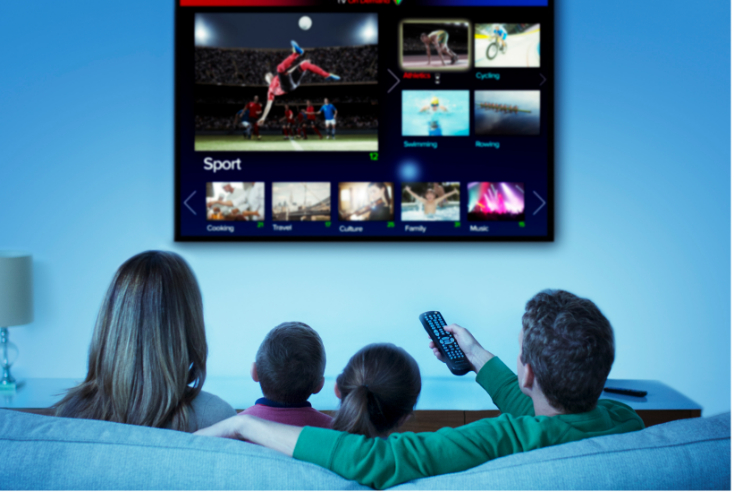Brands seen to be helping consumers will be rewarded

dOpinion
As consumers’ budgets are squeezed further by hikes in streaming prices, brands need to think ‘radically’ about opportunities to retain customers in addressable AV.
The ongoing energy crisis is going to have profound effects on consumers’ media behaviour. Energy price increases are rampant, and they could reach close to £4,000 a year by January next year, five times higher than a year ago. It is catastrophic shock for many households.
At The Specialist Works, we’re running four waves of research with YouGov across the year to understand the pulse of the nation. The results of the first two waves are stark, 61% of people are worried about paying their energy bill, and about a quarter very worried, this is consistent across both the May and July waves.
The hardest hit are obviously the least affluent, but also mid-aged families are starting to feel the pinch, the core consumers for many brands. Two-thirds of people are cutting back on treats and with 61% looking for cheaper groceries and this is the calm before the autumn storm.
Brutal choices will be made
Lloyds Bank reported that their customers had stopped 1.2 million subscription payments in the previous nine months, nearly half of these to streaming services. Recent Kantar research showed subscriptions to a video streaming service fell by 215,000 in the first quarter. Our research shows people cutting expenditure they can control, most housing costs cannot be varied in the short term, so all subscription payments are under scrutiny.
Kantar data shows 56% of households now have at least one paid subscription to a streaming service. Our data shows that 53% of people have a paid or shared Amazon Prime Video account, but this rises to 62% of 35-54-year-olds.
However, it’s not good news for these householders; from September, Amazon is set to hike the annual price of a Prime membership to £95 — a 20% jump. Kantar’s data shows Amazon Prime Video’s thriller series Reacher was the most enjoyed subscription video-on-demand (SVOD) title in Q1 2022, yet Amazon had the biggest decline in share of new subs from 45% share in Q4 ‘21 to 27.1% in Q1 ’21.
If people are making cuts and shopping less, they may forfeit higher cost platforms, many previously ‘just about managing’ families are now using savings to survive. They will be making brutal choices as the cost of energy continues to rocket.
Addressable TV is becoming an established way of reaching ‘lighter viewers’.
These lighter viewers aren’t non-watchers, they just watch very little linear, 25–34-year-olds watch 3¼ hours of streaming, YouTube and catch-up services a day. People are going to cut back on subscriptions, but it won’t mean a return to linear. Netflix are looking at lower tier ad-funded model and I suspect this will be replicated across the industry to maintain subscribers. These platforms will easily attract ad budgets as they deliver audiences that are difficult to reach.
Mainstream will take a hit
To date, most streaming platforms have been in acquisition mode, in the next few years subscriber retention is going to be vital. I suspect heavy streamers will try to keep access to at least one supplier, and choice will probably be driven by the promise of future content. However, our data shows younger groups are less affected or concerned by energy crisis. 16–24-year-olds are Netflix Natives, it’s what they do, they don’t consider the mainstream as an option. They will continue to find ways to watch heavily.
The mainstream channels will be hit, BBC will lose licence fees as Sky will lose subscribers, possibly switching to NOW. I suspect some of their premium packages will lose significant numbers of subscribers, and subscription-free satellite services like Freesat will boom.
Mid-aged families are going to have to make the biggest cuts and currently are the heaviest subscribers. Our research shows 69% of people are cutting back on luxury items and treats, 32% are looking for cheaper alternatives for going out, footfall will drop, people will stay in more.
Brands that are seen to help consumers will win and that should mean new funding models for streaming services will quickly appear, retention will replace acquisition as an objective. Smart marketers may look at bundling services, maybe offering squeezed consumers mobile contracts that include access to VOD subscription services?
We know the demand is there, but household budgets are going to be severely squeezed. It’s going to get tougher and the crisis will last for a couple of years, so brands need to be thinking radically now. There is a huge opportunity in addressable AV, but we are going to see radical changes to the funding models as consumer budgets are hit harder and harder.
 Charlie Makin is founder of location marketing agency Pintarget, part of the What’s Possible Group.
Charlie Makin is founder of location marketing agency Pintarget, part of the What’s Possible Group.




